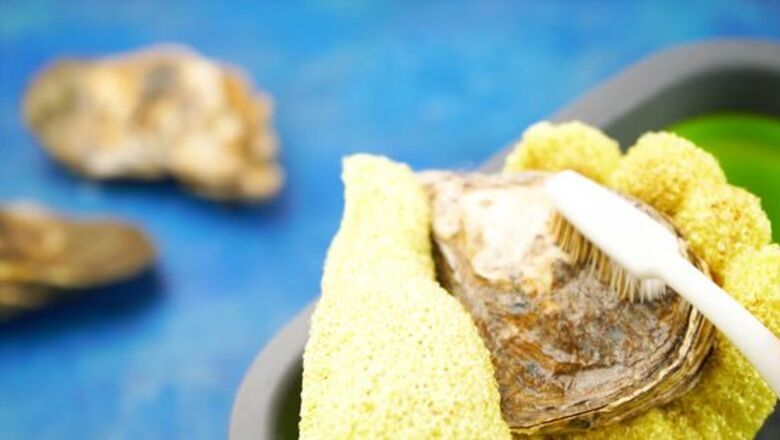
views
Cleaning and Shucking the Oysters
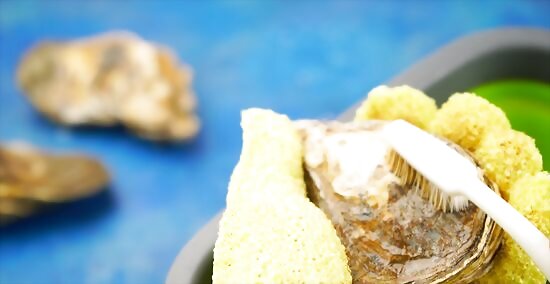
Clean the outer shells. Place the oysters in a colander, packed in single layers. Then, rinse them under a stream of cold running water. Scrub each shell with a scrub brush to remove any dirt or debris. Pay special attention to any creases, where debris can build up and slip inside the shell. Oysters whose shells have opened have died in storage. Discard them. You may have heard about "purging" oysters to get rid of sand. Fortunately, most shellfish is purged ahead of time so you don't have to worry about doing it yourself. However, if you still want to purge your oysters, soak them in a bowl of ice water for 10 minutes.
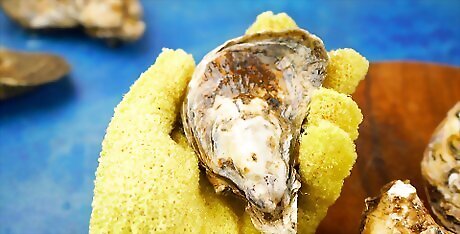
Steady the oysters. Hold the oyster in your non-dominant hand while you open the shell with your dominant hand. Wear a protective glove on the hand holding the oyster to protect it should your knife slip. Alternatively, you can place a clean hand towel on the counter or other flat surface. Put a cleaned oyster on the towel. Use another hand towel to hold the oyster steady as you prepare to open it.
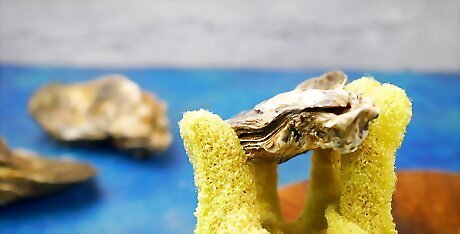
Find the hinge of the oyster shell. The hinge is the meeting point of the top and bottom side of the shell. This is where you'll insert the oyster knife. Look for a slight indentation between the top and bottom halves.
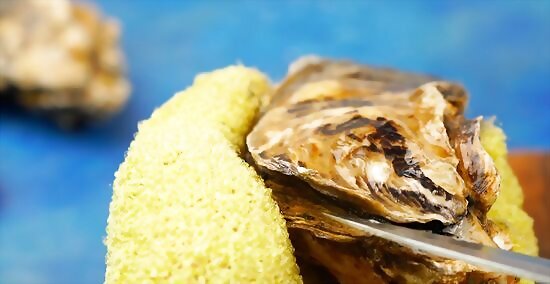
Open the shell. Insert the tip of your oyster knife blade into the hinge. Jiggle the blade by rotating your wrist back and forth. Apply enough pressure to open the shell.
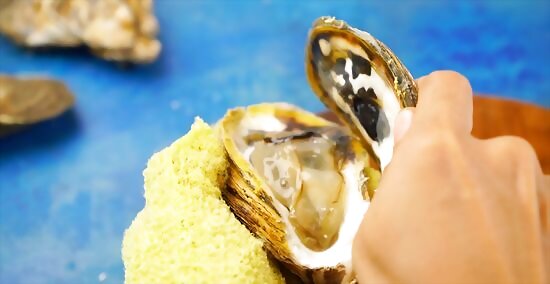
Loosen the oyster from the shell. Slide the blade between the body and the flat side of the shell. This will slice through the muscle that attaches the oyster to the shell. Then, remove the flat side. Repeat the process with the cup side of the shell. As you loosen the body, avoid spilling any liquid from the shell. This “oyster liquor” retains the original flavor of the meat.
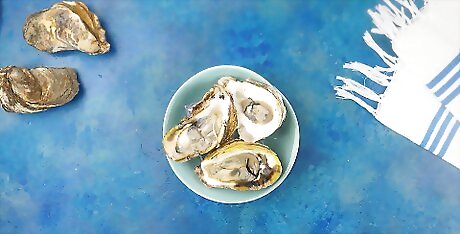
Serve immediately if you intend to eat the oysters raw. Place the oysters on a bed of crushed ice to keep them chilled. Make sure they're consumed within two hours to avoid spoilage and food poisoning. Serve with mignonette sauce, cocktail sauce, or grated horseradish.
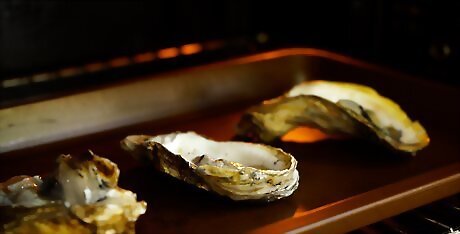
Cook the oysters. If you prefer to not eat raw oysters, there are a number of ways to cook them. You can steam, roast, or fry them. Serve them with Béchamel sauce or Tabasco sauce.
Buying and Storing the Oysters
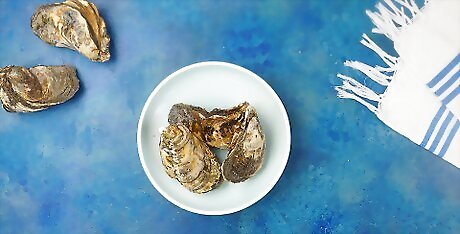
Select oysters based on geography. Oysters caught in waters far from the Equator are usually the freshest. The best Northern Hemisphere locations include the Pacific Northwest or either coast of Canada. For Southern Hemisphere locations, look for southern Chile or New Zealand as the country of origin.
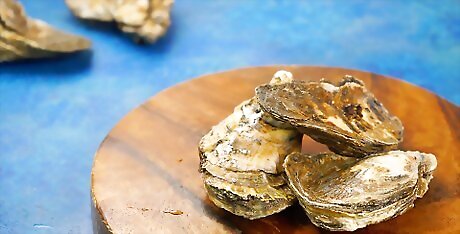
Choose only live oysters. Oysters should remain alive until they're shucked. Otherwise, they're not fit for consumption. To test for life, try opening the shell. If it snaps back, the oyster is still alive. If not, you shouldn't buy it. Cracked or open shells are other markers of dead oysters.
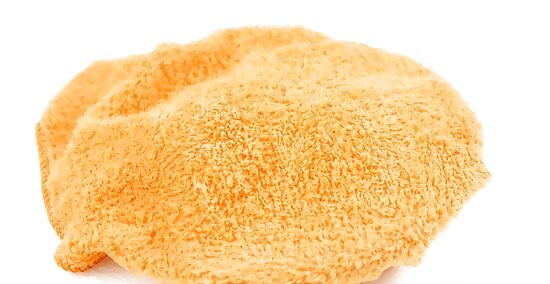
Store the oysters in the refrigerator for up to two days. Place them cup side down (flat side up) on a large plate. Cover them with a wet kitchen towel. Make sure the fridge has enough air circulating to avoid killing the oysters. Avoid placing them on a bed of ice. Oysters live only in saltwater. Anything containing fresh water can kill them.



















Comments
0 comment